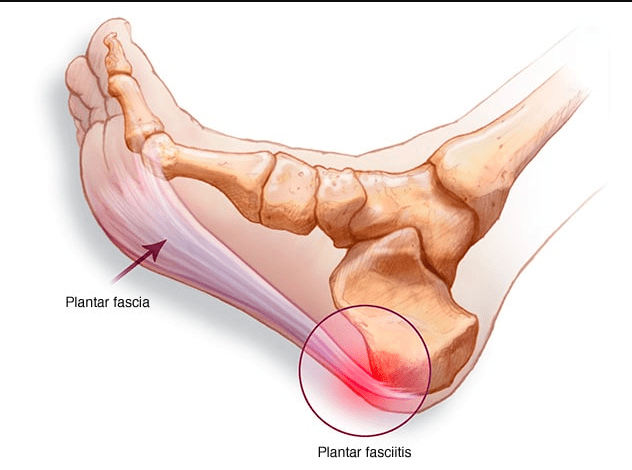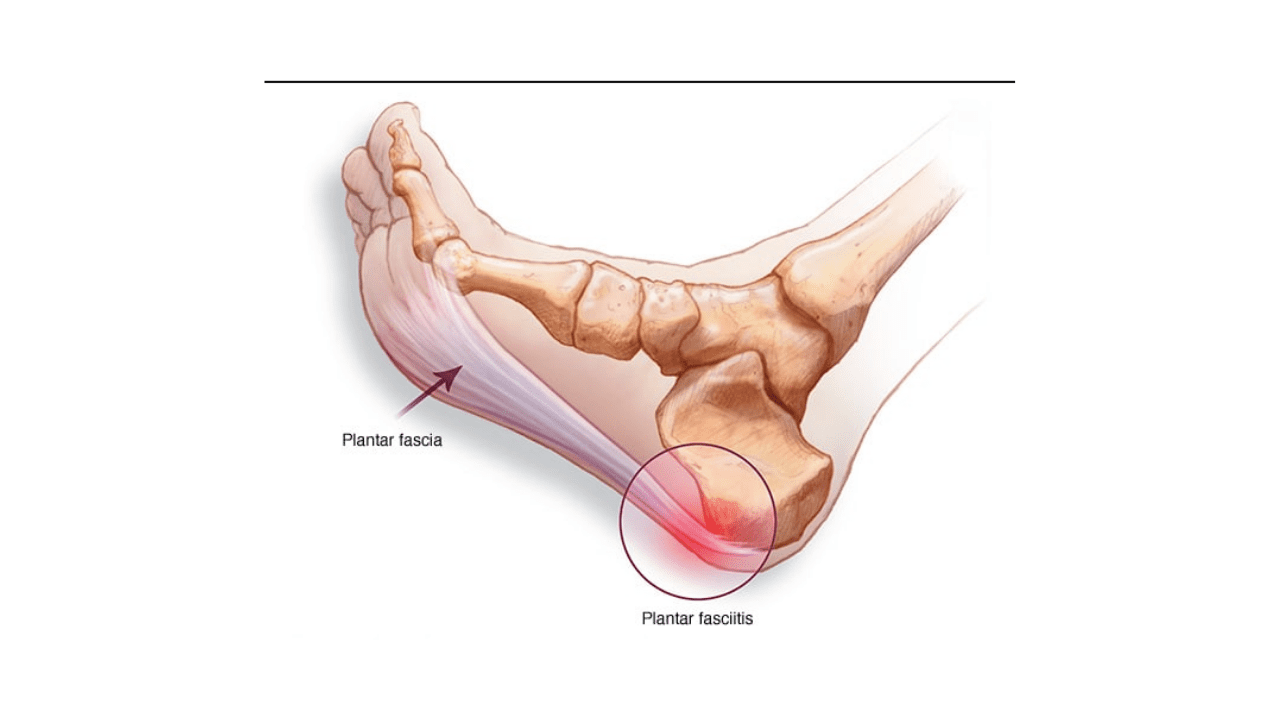If you experience pain in the bottom of your foot, you may have planter fasciitis. This condition is caused by inflammation of the ligament that runs along the bottom of your foot, and it can be quite painful. There are several treatment options available for planter fasciitis, so seek medical help if you are struggling with this condition. Treatment typically involves rest, ice, and medication to reduce inflammation. In some cases, surgery may also be necessary. Let’s read in detail about planter fasciitis and the best way to cure it.
What is planter fasciitis? What causes it?

Planter fasciitis (or heel pain) is inflammation of the plantar fascia on the bottom of the foot, causing pain and discomfort. This condition can be extremely painful and make walking and standing very difficult.
The cause of planter fasciitis is not completely clear, but some experts believe that poor footwear or overuse may contribute to this injury. Additionally, related calf tightness or spasms can also involve increased stress on the plantar fascia resulting in inflammation.
Flat feet are probably a factor in some cases. If one has normal arches in their feet when they get up unfed during the day, then the arch will likely fall during the day causing a strain on the plantar fascia.
How to treat planter fasciitis? What is the recovery time for someone who has had planter fasciitis?
Treatment will vary depending on the degree of injury and personal preference, but some treatment options may include: rest, ice application, nonsteroidal anti-inflammatory medications (ibuprofen, naproxen), or cortisone injections. If pain persists or worsens after more conservative measures, surgery may be necessary to shorten and tighten the plantar ligament. Recovery time can vary from case to case and also depends on how bad it is at first. Planter fasciitis rarely requires more than a few weeks to heal completely.
Symptoms of planter fasciitis?
Symptoms of planter fasciitis include: pain and inflammation on the bottom of the foot, especially near the heel; tenderness and pain when touching or pressing on the affected area; difficulty walking and standing due to pain.
What is the best way to prevent getting planter fasciitis?
Wearing proper footwear that will support your arch can help prevent this condition from occurring. If you notice any change in your feet like swelling, redness, hot to touch, bruising, numbness/tingling, loss of movement (inability to flex), do not wait – contact a doctor immediately.
If one has plantar fascia already, there are several things you can do at home for temporary relief including: ice application, try to keep your heels off the ground for a while after you wake up in the morning and at night before going to bed. As prevention is better than cure, then My Happy Feet Socks can help in preventing planter fasciitis. Read the My Happy Feet Socks Reviews to know the details.
If planter fasciitis is not treated, what could happen?
If left untreated, this condition can worsen and possibly lead to chronic plantar fasciitis or even rupture of the tendon. This injury would require surgery to repair. In rare cases it can lead to complications such as calcaneal apophysitis (bony growth from one of the bones in the heel). Surgery might be necessary in some cases.
Is it a serious condition?
Yes. This injury should not be taken lightly and requires urgent care in order to prevent it from worsening.
Can you get planter fasciitis in both feet?
Yes, it is possible if one has a genetic predisposition (flat feet), and/or overuses them frequently which can put added strain on the plantar fascia. If one of your legs’s muscles/tendons are tighter than others, it might lead to an uneven gait and therefore more stress on certain parts of your body such as your ankles and feet. It is important not to ignore any pain in either foot or leg, especially if there is no known cause for this pain; it could be a sign that something else is wrong within the body.
What factors tend to increase risk for developing planter fasciitis?
Some factors which can increase your chance of developing planter fasciitis are: activity level; wearing shoes that do not support the arch; having flat feet (or an unusually low arch); age (most commonly found in people between 40-60 years old); obesity; and females.
What is the most effective treatment for plantar fasciitis?
The most effective treatment for plantar fascia typically involves decreasing pain, increasing flexibility/strength of the foot/leg, and preventing further injury. Plantar fasciitis can be very hard to treat because it usually does not just affect one specific spot on the foot/leg, but instead affects several different parts combined.
Are certain sports more likely to cause plantar fasciitis?
Sports which involve running/jogging, jumping, basketball, soccer, etc… are all at risk of causing this injury since they put excess strain on the heel and plantar fascia.
What may increase someone’s risk of planter fasciitis?
Obesity, flat feet, running long distances without proper support, and wearing shoes with little arch support are all risk factors for developing plantar fasciitis. If you have any of these conditions or habits, it is important to speak with your doctor right away so they can help you prevent this painful condition.
How many people suffer from planter fasciitis?
Approximately 1 in 10 people may experience some form of heel pain during their life, but most cases are very mild and do not require treatment. Only about 5% of those who experience heel pain will be diagnosed with plantar fasciitis.
How long does planter fasciitis last?
Planter fasciitis usually takes somewhere between a few weeks and three months to heal completely, depending on the severity. This pain is typically brought on by overuse of the plantar fascia ligament, so taking time off from any activities that place too much stress on this area will likely help inflammation subside quicker. Wearing comfortable shoes with good arch support and avoiding running long distances without proper support may also help prevent this condition.
How many people have died as a result of planter fasciitis? Any famous individuals who suffered from planter fasciitis?
There have been cases of people dying as a result of severe plantar fasciitis, but these are very rare. Some notable individuals who suffered from planter fasciitis include: Fred Couples (golfer), Dikembe Mutombo (basketball player), and Alyssa Milano (actress).
Conclusion
Through my research for this article I learned that planter fasciitis is a very common condition and can be caused by many factors. It is important to get checked out by your doctor if you are experiencing any heel pain in order to keep this pain from worsening into something more serious, such as plantar fascia rupture or tendinitis (a more uncommon/extreme form of plantar fasciitis).
Medical treatment can typically help decrease pain and increase flexibility within weeks, but it may take up to several months to completely heal depending on the extent of the injury. As an athlete myself, I understand how hard it can be to take time off from activities that are necessary components of life; however, I encourage everyone experiencing heel pain to speak to their doctor about appropriate treatments in order to prevent plantar fasciitis from worsening.
I hope this information was helpful! Feel free to contact me if you have any questions or concerns. I would also appreciate it if you could please rate my post; thanks!

